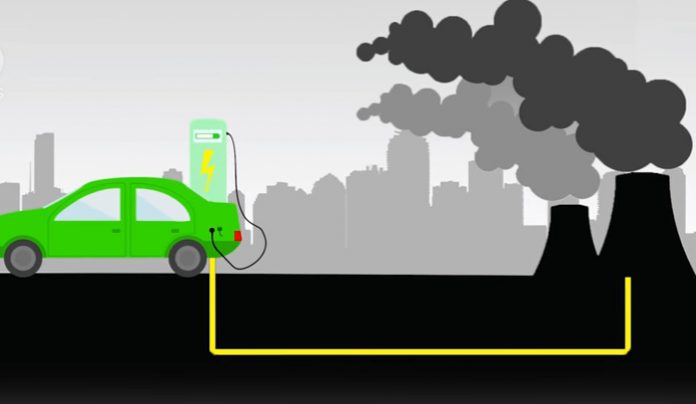Transportation networks are one of the biggest consumers of oil and oil-related products in the world today. Up to 70% of the oil needs in the US are accounted for in this network. Automobiles, by far, make the greatest environmental impact on a global scale because of this fossil fuel need.
This means the environmental impact of electrical cars can be a positive addition to our transportation networks. By not requiring ongoing oil consumption for direct combustion, the number of emissions produced by our transportation needs can be reduced. Yet the environmental impact of electric cars is often seen as a net negative experience.
How can this be?
Most Power Stations Still Consume Natural Resources
Although electric cars are a low-or-no emissions solution, the power they use will still consume fossil fuels in most circumstances. Although oil consumption may go down, the burning of coal, natural gas, and other resources must go up in response. Otherwise there will be no power to charge the electric car every night.
When there are low or zero emission power resources that can be used, then the environmental impact of electric cars can be positive. This only applies when sun or wind power resources are used for the charging process. The power generated by nuclear reactors may also apply, though the threat of a meltdown will also be ever-present.
Coal-Fired Power Plants are the #1 Greenhouse Gas Pollutant
If the source of emissions shifts from the tailpipes of automobiles to the smokestacks of power plants, it may seem like environmental damage is easier to control. In reality, this is how electric cars have a net negative environmental impact on the world today. Coal-fired power plants, even with increased regulation, are still the single largest source of greenhouse gas emissions that are released into the environment.
In the United States, it is estimated that over 2 billion metric tons of carbon dioxide are released into the atmosphere every year from coal-fired power plants. If the fleet of electrical vehicles grows and there isn’t an equal expansion of renewable low-or-no emission energy sources, then the demand on coal-fired power plants will rise.
That means pollution will also rise.
When Owners Plug a Vehicle in Also Matters
According to a report published by PBS, a recent study of electrical cars behind charged in the Rust Belt of the US showed that more greenhouse gas pollution is generated when owners plug their vehicles in at night. If owners just plugged their vehicles in at random times during the day, when utility fuel mixes tend to be more varied, then the greenhouse gas production levels were reduced.
This is because most utility companies prefer to run their coal-fired power plants at night, even though wind levels also tend to increase at night.
And this doesn’t just apply to the United States. Every developed nation relies, on some level, on coal power. This is especially true in a nation like China. So even though an electrical vehicle seems like a great way to save the environment, the environmental impact of electrical cars right now proves otherwise.
Crystal Lombardo is a contributing editor for Vision Launch. Crystal is a seasoned writer and researcher with over 10 years of experience. She has been an editor of three popular blogs that each have had over 500,000 monthly readers.


















